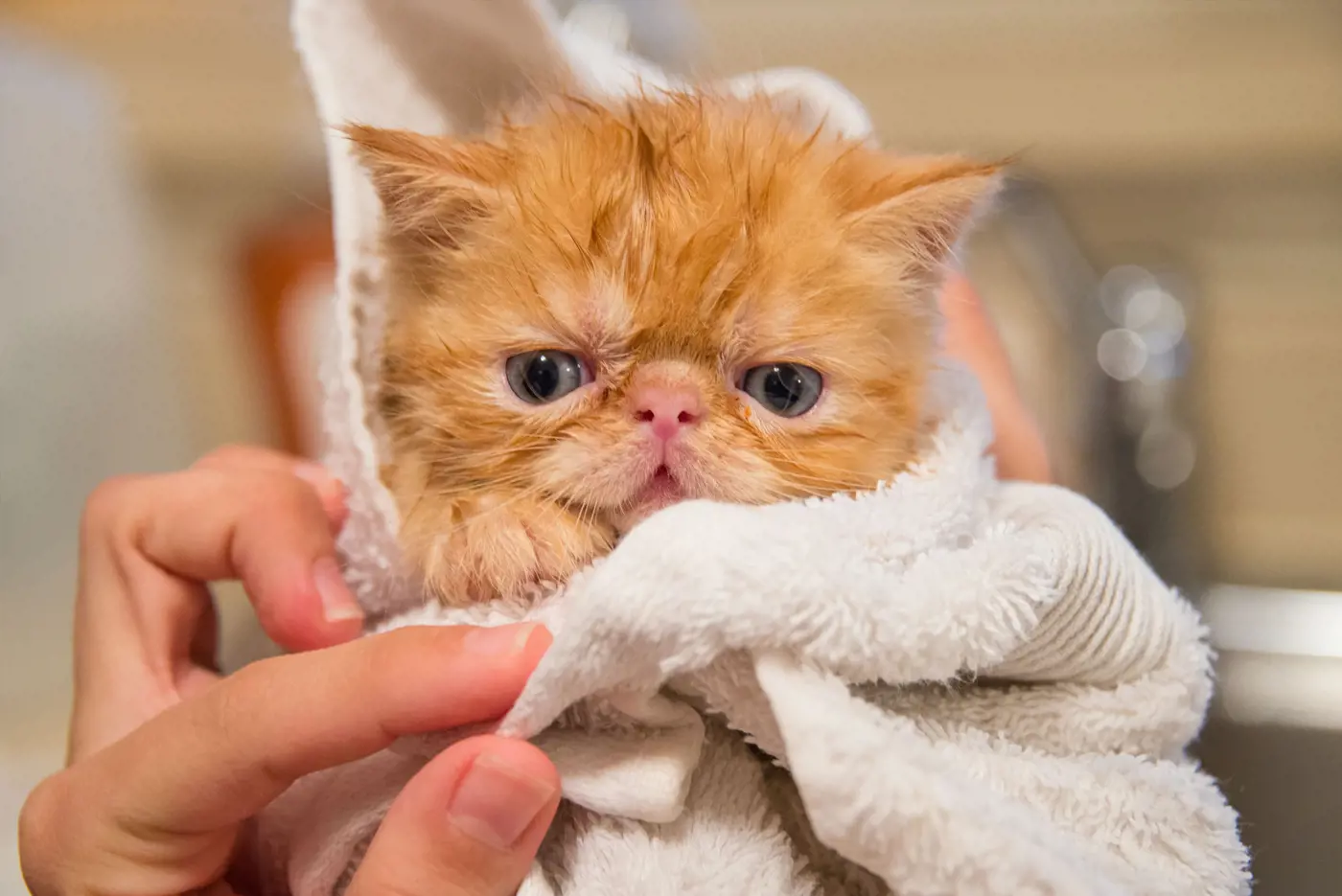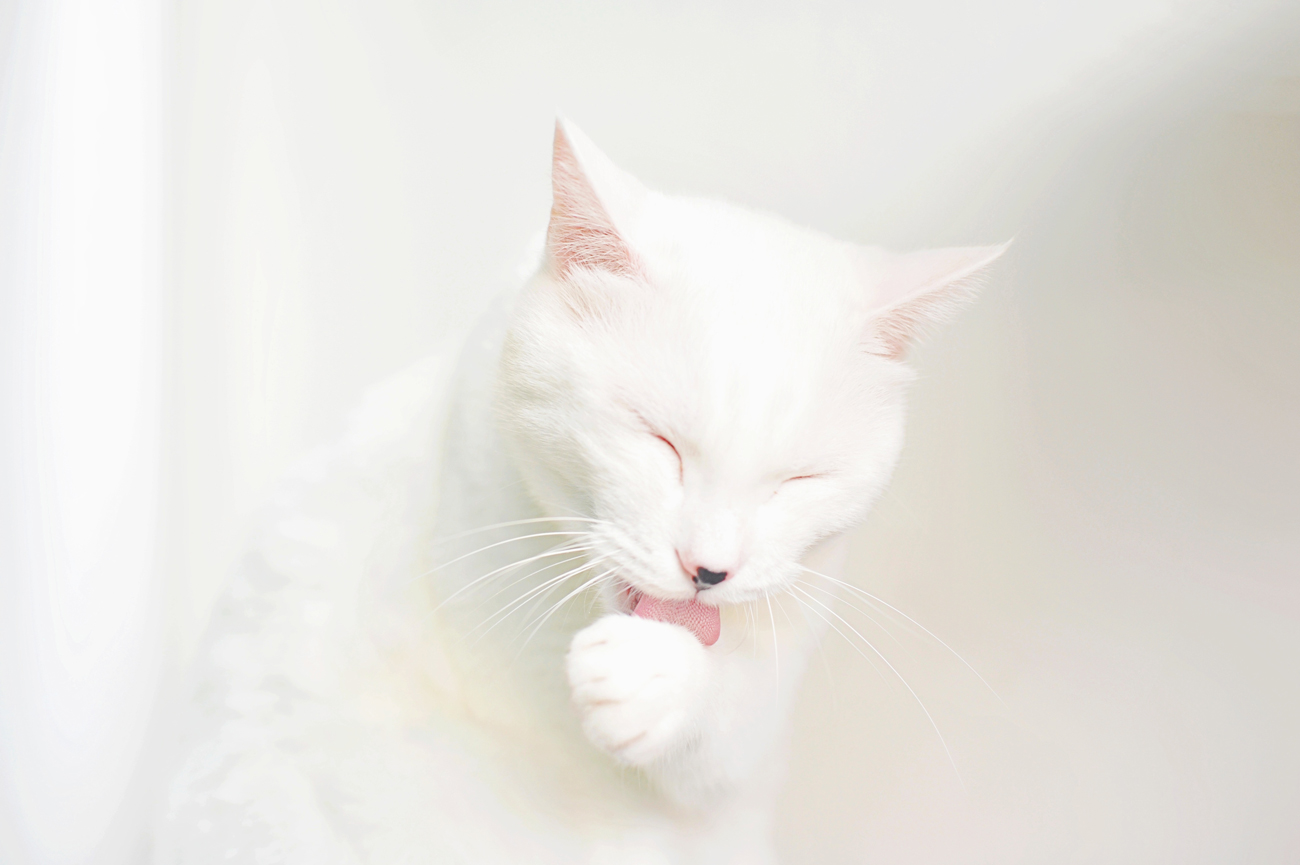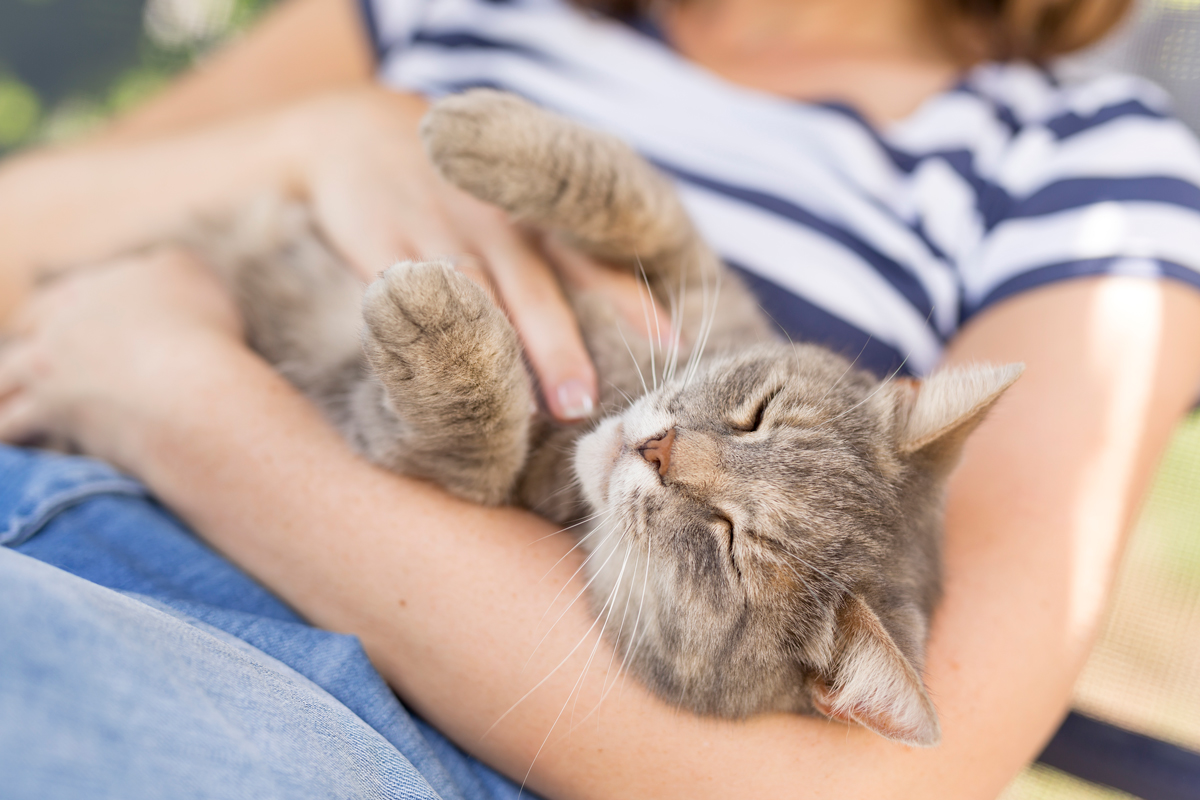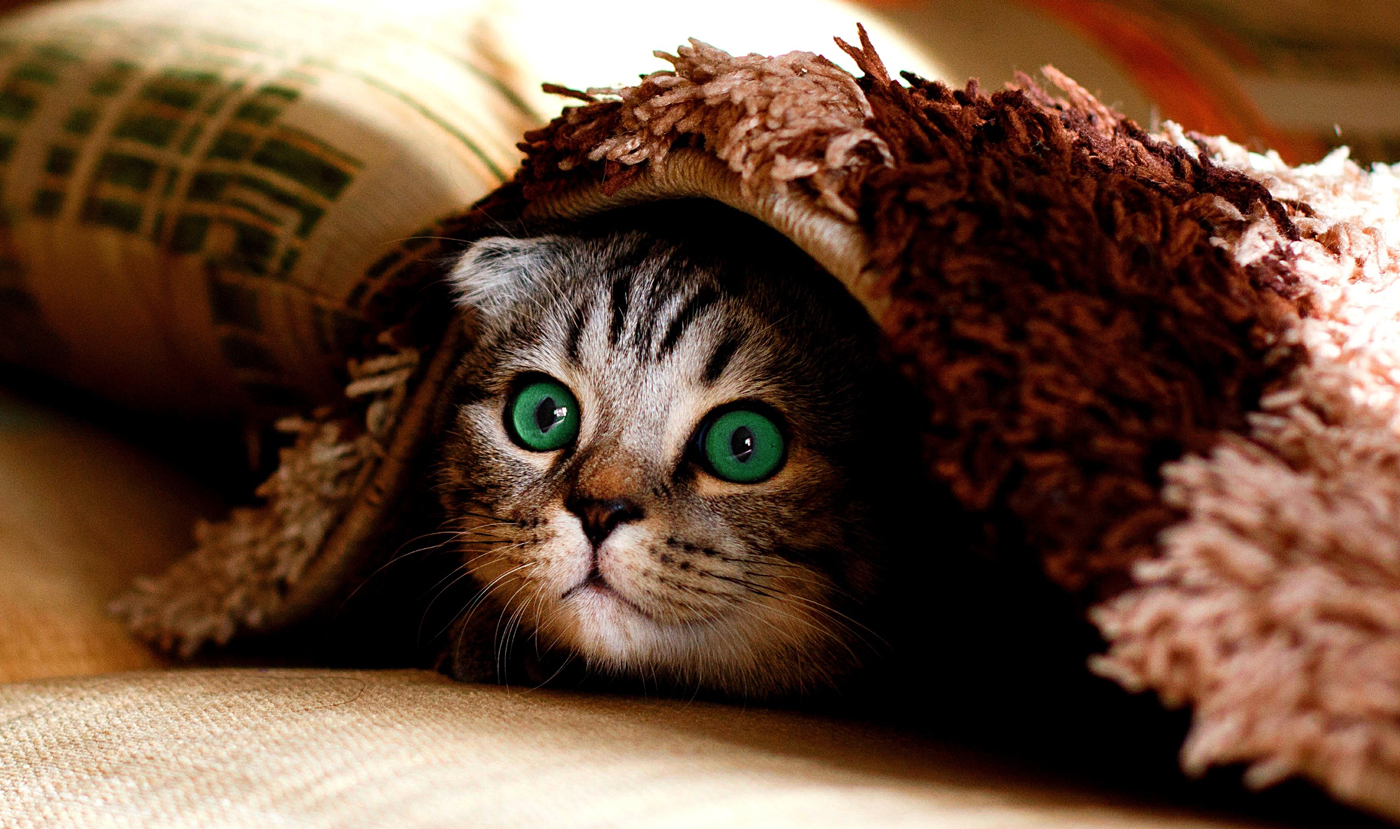How to groom your cat properly
8th October, 2020

As pets go, cats are pretty low maintenance compared to dogs. But when you’re buying their favourite treats and moving aside to let them sit in their favourite sofa spot, you might sometimes wonder who really ‘owns’ who?
But it doesn’t stop there. While the occasional brush of fur or trim of nails may seem adequate, actually your feline companion would probably benefit from a more regular program of grooming. So, how do you go about grooming your purr-fect kitty properly?
What is cat grooming and why should you do it?
This may seem obvious but actually there’s a lot more to cat grooming than you might think. Apart from brushing, there’s also nail trimming, skin care and even teeth cleaning to consider.
Importantly, grooming is a great opportunity not just to bond with your cat but also to perform a handy at-home health check.
This regular inspection will mean you can pick up on any potential problems before they get more serious. But remember that this DIY check is no replacement for regular visits to the vet.
A professional eye is often needed to spot problems early and cat insurance can help you cover the costs if your feline needs further attention.

Which cats need more grooming?
Cats are not all born equal when it comes to grooming needs. Breeds such as British Shorthaired or Siamese are quite capable of grooming themselves. So, a brief brush once a week should be enough to spend time with them while maintaining their coat.
Long-haired breeds such as Persians, Birmans or Himalayans will benefit from a cat brush once a day to avoid matting, knots and excessive fur ball build up. Matted hair can become uncomfortable and even painful, so your cat will definitely appreciate your help – even if it doesn’t look like it at the time.
Whatever breed of cat you own, all felines benefit from grooming. This includes hairless cats – after all it’s not just fur that needs care and attention!
How to groom your cat correctly
From tiny kittens who’ve never been taught how to groom to older cats who aren’t as supple as they once were, many felines need a helping hand with self-care.
Regular cat grooming is an important part of being a responsible pet owner throughout their lifetime. From the tips of their ears to the ends of their claws, there are plenty of things you can help your cat with.
Fine fur coat
Grooming your cat’s coat is probably the most obvious part of the grooming session.
As well as cutting down on fur balls and tangles, it also alerts you to the presence of any ticks, wounds or skin problems that need sorting out.
While cats spend a lot of time licking their fur that doesn’t mean they don’t need a helping paw once in a while to keep it in prime condition.
We have some top tips to help you achieve a successful grooming schedule:
-
Grooming a cat from when they are very young is the best way to get them into a healthy care routine.
-
Start slow. Rather than trying to brush the whole body in one session, why not break it up into smaller parts? Make sure you include the back legs and other hard-to-reach areas. This is particularly useful for older cats.
-
Choose a brush to suit your cat. There are so many different combs and brushes on the market you’ll be able to find one to suit any cat. Perhaps start off with a softer brush to get the cat used to the sensation. Then move on to a harder, more effective brush as the grooming sessions develop.
-
Use a bristle brush to sweep up the coat in the direction of the cat’s head, and then smooth it down again in the direction that the hair grows.
-
Short-haired cats might need a fine-toothed metal comb once a week to cope with tangles and a bristle brush to remove loose hairs.
-
Long-haired cats need to be brushed daily with a steel comb. Tease out difficult knots with your fingers, using a damp cloth if necessary. Particularly bad knots might need some attention from a professional groomer.
-
Keep a brush close at hand. Having a brush near to where your feline naps is a good way to get in a bit of grooming at an opportune moment when they are at their most relaxed.
-
Use gentle strokes to get your cat into the right mood. Working up slowly and steadily will achieve better results.
-
Choose the right time. Try to groom when the space is most calm and relaxed. Excessive noise and distractions will not put your cat in the right frame of mind.
-
Don’t skimp on the treats. Grooming shouldn’t be unpleasant and you want to associate the activity with positive feelings. A nice cuddle and a couple of their favourite treats will bring contented purrs all round.

Cleaning your cat’s ears
Whether excessive wax build up, bleeding, sores, inflammation or dirt and debris, an ear check will alert you to common feline problems.
If you notice a smelly reddish-brown discharge or your cat is scratching their ears a lot, they might have ear mites.
Also check for any thickening, scaling or redness around the edges of the ears as these can be signs of an allergy or a variety of other conditions needing professional attention.
To clean your cat’s ears, gently fold the ear back and wipe away any earwax or debris from the underside of the ear.
Lift away the dirt and wax rather than rubbing it into the ear. Never use cotton buds or try to clean the inner portion of the ear — as with humans, probing inside your cat's ear can cause injury or infection.
Keep an eye out for disease
Around the eyes can be a sensitive area for grooming. Remove tear stains on your cat’s fur with some distilled water and cotton wool. Some breeds of cat can have long hair around their eyes, which can cause irritation.
Very carefully use a pair of blunt-ended scissors to trim away hair that lies too close to the eyes. Get someone to hold your cat while you do this or consult a professional groomer.
Routine eye care in cats helps prevent eye disease. If you notice any redness, swelling or discharge then it could be a sign of an infection or other damage needing appropriate treatment from your vet.
Having cat insurance in place means that you may be able to get help towards treatment costs for even minor ailments before they get worse.
Nosing around
Moist and smooth, your cat’s cute nose should be free of any bumps or swellings. Watch out for any ulcers, wounds or discharge as these could indicate a health problem.
Wipe your cat’s nose clean with clean water and a cotton wool pad. For breeds of cat like Persians who have a lot of wrinkles around the nose it’s a good idea to clean out the folds with cotton wool and water, too.

Tip-top teeth
Not all cats appreciate this, but teeth brushing using finger brushes and pet toothpaste can be an important part of grooming.
It can also give indicators as to the cat’s general state of health. Teeth should be clean and white while gums should be pink and healthy looking without redness, swelling or bleeding.
If your cat's breath begins to smell bad then take them to the vet for a full dental check-up.
Caring for claws
Cats who love the outdoors and love a good scratch on their scratching post will probably take care of their own claws.
But sometimes if your feline spends a lot of time indoors or is getting on in years, they might need a bit of help. Checking for overly sharp or long claws is a good way to prevent them from growing inwards into their pads and causing pain and infection.
Depending on the cat and your level of experience, you might want to have a go at trimming them yourself but if you don’t feel confident then perhaps take them to a professional who can help.
It’s important to avoid the ‘quick’ of the cat’s claw – if this is cut it can be painful and result in bleeding. If you choose to clip your cat’s claws, check pads for injuries or any debris that could become uncomfortable.
Signs that your cat is not happy being groomed
There are many ways your cat will try to communicate with you, some more pleasant than others.
While it should be obvious whether or not your cat is enjoying the grooming experience, here are some things to watch out for.
-
Hiding – if your cat disappears whenever you pick up the grooming brush then this could be a warning sign that they’re not enjoying it as much as they should be. Think about what you can do to change that.
-
Moving away from the brush – cats don’t always feel in the mood for grooming. Don’t try to force your cat if they move away or are resistant to grooming. Either stop and come back another time or try a different technique. Perhaps try brushing just one section of fur at different times of the day for as long or as short a length of time as is comfortable for them.
-
Verbalizations – a change in their vocalizations can be a sign of unhappiness. A loud mournful yowl low in pitch is the sign of an unhappy puss.
-
Body language – if a cat’s ears are back, their fur is standing on end, or their tail is tucked under them they might be feeling unhappy. A cat that is tense or on edge should not be forced into a grooming session.
-
Aggression – if cats are feeling unhappy then they can become hostile and lash out even to someone they love and trust and who has their best interests at heart.
If your cat seems unhappy then it might not be because of the grooming. If you have a Purely Pets policy you can contact the Purely Pets 24-Hour Vet Helpline for advice at any time.
Bills for four-legged friends can become expensive if you leave things too long, particularly if you’re not covered by cat insurance.

Signs of over- and under-grooming
Normal, healthy cats like to groom themselves, but when a cat is not feeling well, their grooming habits can change dramatically.
They might increase or decrease the time that they spend grooming themselves, or may even stop grooming altogether. This means that unhappy cats often end up looking a bit unkempt or bedraggled.
Conversely, they could start over-grooming and might even end up licking patches of skin completely bald. If this happens then a quick trip to the vet could help them get their normal grooming habits back.
Having adequate cat insurance in place can help you pay your vets bills meaning you can contact your vet straight away to get a diagnosis and some help without having the worry of a large bill.
Cat insurance policies arranged through Purely Pets even give you access to professional advice through our 24-Hour Vet Helpline.
Get a cat insurance quote with Purely Pets
From spending quality grooming time together to greeting each other after a hard day at work, cats make wonderful companions for many people.
It’s therefore vitally important they receive the very best care you can afford. From day one of pet ownership, you should have a comprehensive cat insurance policy in place to cover the cost of emergency treatment.
If you’ve taken out award-winning cat insurance arranged through Purely Pets you’ll get cover for vet fees from £1,000 to £15,000 per year. You can even choose an excess level starting from just £60.
Our team of insurance specialists have designed 15 levels of lifetime cover so you can decide what’s right for you and your friendly feline.
As well as our invaluable 24-Hour Vet Helpline, our online policy management portal gives you the flexibility to manage your policy at a time that’s best for you.
Get a quick quote today.
Policy benefits, features and discounts offered may very between insurance schemes or cover selected and are subject to underwriting criteria. Information contained within this article is accurate at the time of publishing but may be subject to change.
Helpful Pages
Recent Posts
Pet Insurance Quote
- 98% claims paid *
- Claims paid directly to vets
- 24/7 vet video consultations
- Interest free monthly payments




